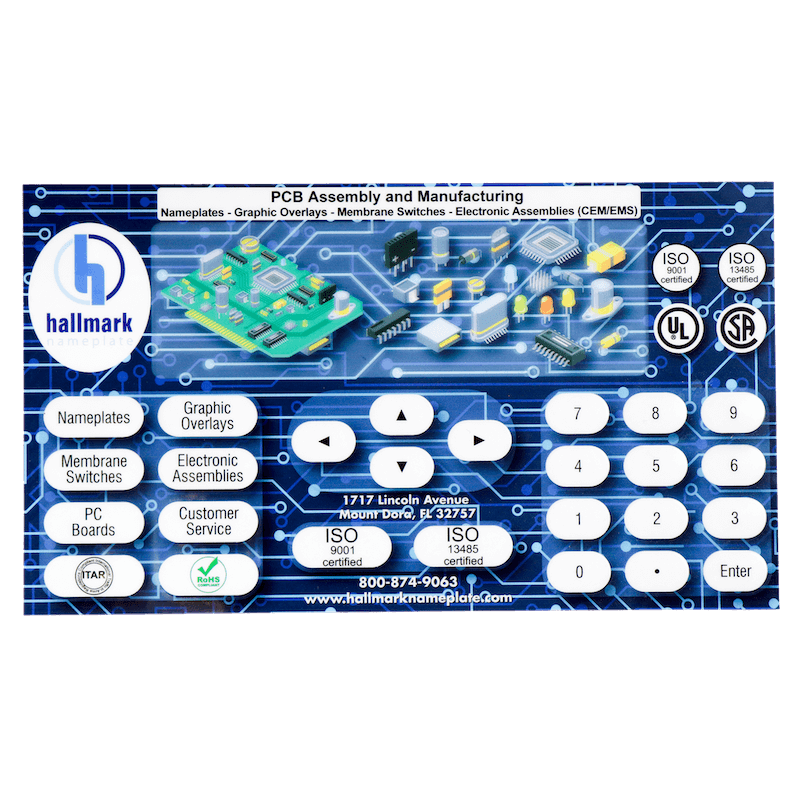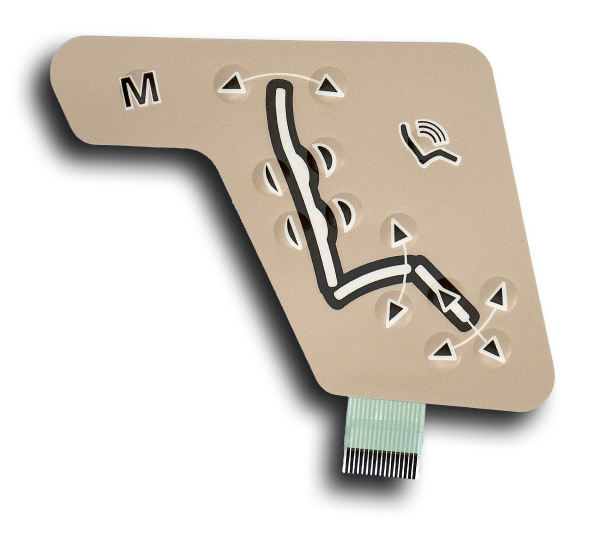Membrane Layer Switches Over Explained: A Comprehensive Overview to Their Benefits
Membrane switches stand for a innovative and versatile remedy for developing user interfaces across a selection of markets. As industries progressively look for effective and reputable control interfaces, comprehending the certain benefits and applications of membrane switches over becomes necessary.
What Are Membrane Layer Switches?

When stress is related to the membrane layer button, the layers make call, completing an electric circuit. This easy mechanism enables a large range of applications, from customer electronic devices to commercial machinery. Membrane buttons are commonly designed to be waterproof and immune to dirt and contaminants, making them appropriate for settings where sturdiness is necessary.
Furthermore, the versatility of the products used in membrane layer switches assists in cutting-edge layouts that can adjust to various forms and measurements. This flexibility adds to their appeal in varied areas, including clinical gadgets, automotive controls, and home appliances. In general, membrane switches stand for an important component in modern interface innovation, linking the space between individuals and digital systems.
Key Advantages of Membrane Layer Switches
Among the myriad of user interface choices available, membrane layer changes stick out for their unique mix of advantages. Among the key advantages is their light-weight and portable layout, which enables assimilation into a wide variety of devices without adding substantial bulk. This is particularly helpful in applications where room is limited.
Additionally, membrane layer changes deal sturdiness and resistance to environmental aspects. They are commonly constructed with materials that can endure moisture, dirt, and numerous chemicals, making them suitable for extreme conditions. This longevity adds to a much longer life-span compared to typical mechanical switches.
Another substantial advantage is the adaptability in customization. Membrane buttons can be published with numerous graphics, shades, and appearances, enabling tailored layouts that fulfill particular branding or useful demands. This flexibility extends to the variety of layers and circuit alternatives, offering engineers with multiple setups.
Furthermore, the tactile responses supplied by some membrane layer changes improves customer experience, making them more intuitive to operate. Finally, the simplicity of cleansing and maintenance additionally solidifies membrane layer buttons as a practical selection in both customer and industrial applications. Membrane Switches. On the whole, these key advantages make them a recommended option for many developers and makers
Applications in Numerous Industries
Exactly how do membrane layer switches locate their place throughout varied industries? Their adaptability and capability make them indispensable components in sectors varying from health care to consumer electronics. In clinical tools, membrane switches are utilized for their ease of cleansing and resistance to contamination, guaranteeing health in atmospheres where sterility is essential.
In the customer electronics market, these switches supply smooth, easy to use interfaces that improve item visual appeals while preserving durability against deterioration. Automotive applications gain from membrane switches also, where they are used in dashboards and control panels, using reliable performance in challenging problems.
In addition, commercial machinery utilizes membrane layer buttons for control panels as a result of their effectiveness, ability to endure severe atmospheres, and adjustable styles that deal with certain operational needs. The food market leverages membrane layer buttons for their simplicity of use and resistance to spills, making certain operational performance in fast-paced settings.
Inevitably, the flexibility of membrane switches throughout these varied applications emphasizes their important role in contemporary technology, boosting individual interaction while visit their website meeting industry-specific demands. Their continued development guarantees additional combination right into emerging fields and innovative products.
Design and Modification Choices
The layout and personalization choices available for membrane buttons are vital for tailoring interfaces to satisfy certain customer needs and aesthetic preferences. These switches can be made in various shapes, sizes, and layouts, permitting for seamless combination right into varied applications. The versatility in style indicates that makers can create distinct user interfaces that improve use and keep brand identification.
Custom textures, shades, and graphics can be applied to the surface area of the membrane switch, supplying a chance for branding and user engagement. Furthermore, backlighting options, such as LED illumination, can be integrated to improve presence in low-light problems, therefore boosting functionality.
Useful aspects can likewise be personalized, consisting of responsive feedback and actuation force, which can be adapted to suit different customer interactions. The choice of products, such as polyester or polycarbonate, permits variations in longevity and ecological resistance, accommodating the specific needs of different industries.
Ultimately, the extensive style and personalization capacities of membrane switches make it possible for companies to create aesthetically enticing and straightforward interfaces, making certain that their items fulfill both aesthetic and functional requirements efficiently. Membrane Switches.
Factors To Consider for Execution
Executing membrane layer changes requires careful consideration of various factors to ensure ideal functionality and customer experience. Factors such as direct exposure to description dampness, extreme temperature levels, and chemical materials can substantially affect the switch's performance and long life.

An additional vital aspect is the button's style and format. Making certain that the responsive comments and actuation pressure align with user expectations boosts usability. Carrying out individual screening can offer valuable understandings right into the optimal layout.
Additionally, compatibility with digital parts should be evaluated. The button's circuitry must line up with the general system design, making sure dependable signal transmission and minimizing disturbance.
Moreover, manufacturing approaches and costs must be assessed. The choice between custom layouts and conventional versions can lead and influence both budget plan time.
Lastly, think about repair and maintenance. Membrane buttons may require details cleaning and care procedures to keep their appearance and functionality gradually. By dealing with these factors to consider, companies can apply membrane buttons that meet their functional requirements while offering a positive customer experience.

Final Thought
In useful reference verdict, membrane layer changes represent a long lasting and flexible control user interface appropriate for a wide range of applications across multiple industries. Membrane Switches. As innovation continues to evolve, the relevance of membrane buttons in contemporary gadgets stays substantial, providing both capability and visual allure.
Membrane layer switches over stand for a versatile and advanced option for creating individual interfaces across a range of markets.Understanding the essential elements of modern electronic user interfaces, membrane layer buttons are a kind of customer interface gadget that are composed of adaptable, slim layers of material. On the whole, membrane switches represent a vital component in modern customer interface modern technology, bridging the gap between users and electronic systems.
Amongst the myriad of individual interface alternatives readily available, membrane switches over stand out for their distinct combination of benefits.The layout and personalization choices readily available for membrane switches are critical for tailoring user interfaces to satisfy specific user needs and visual choices.